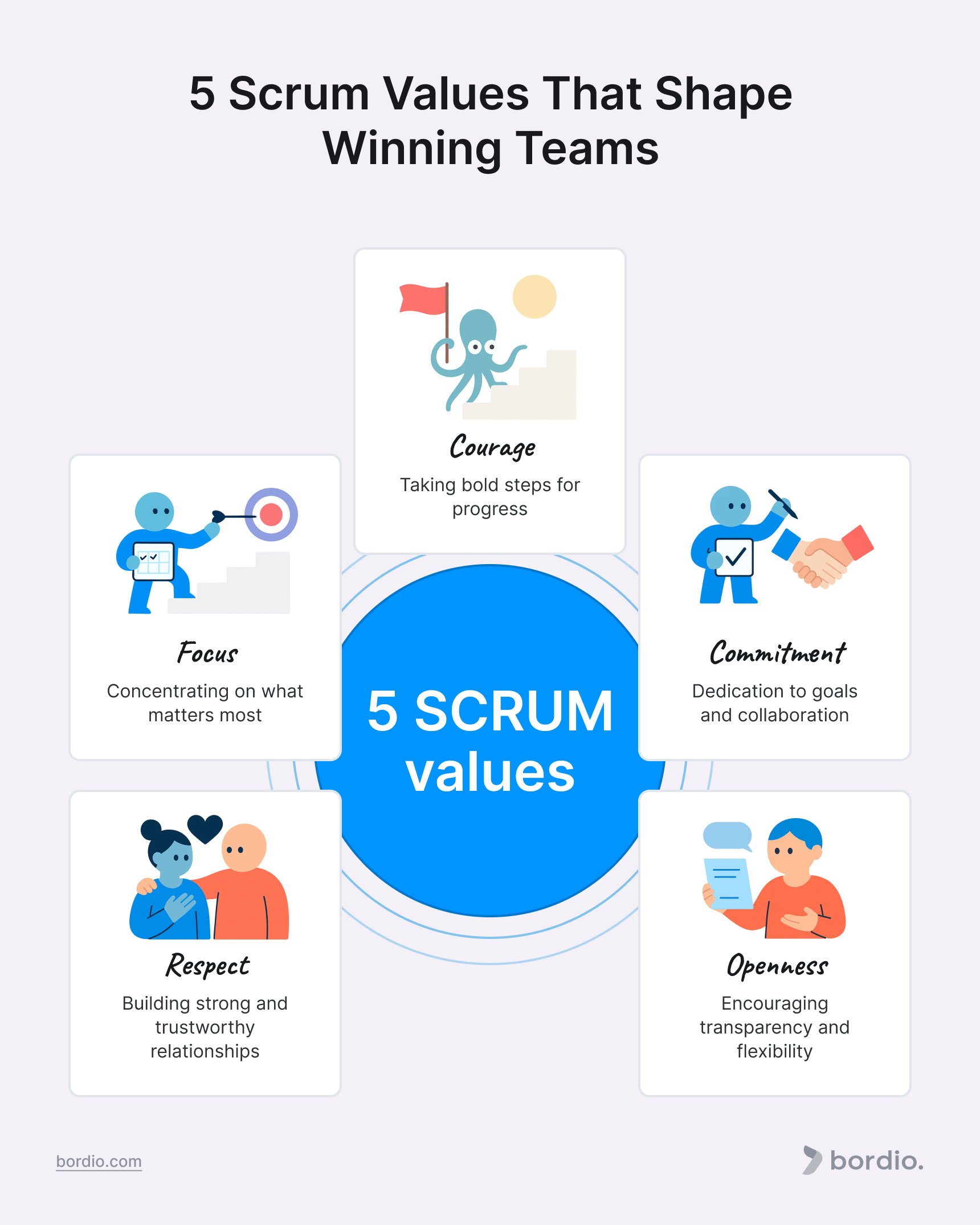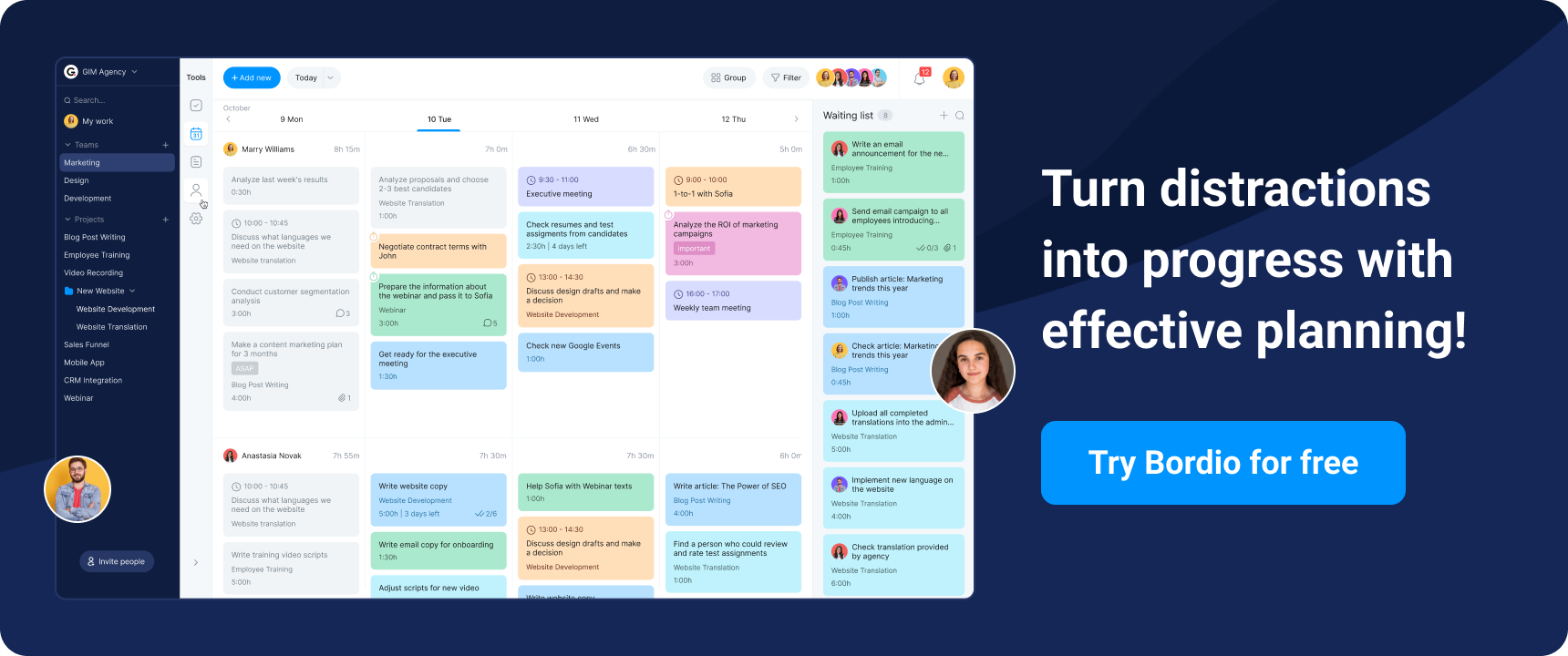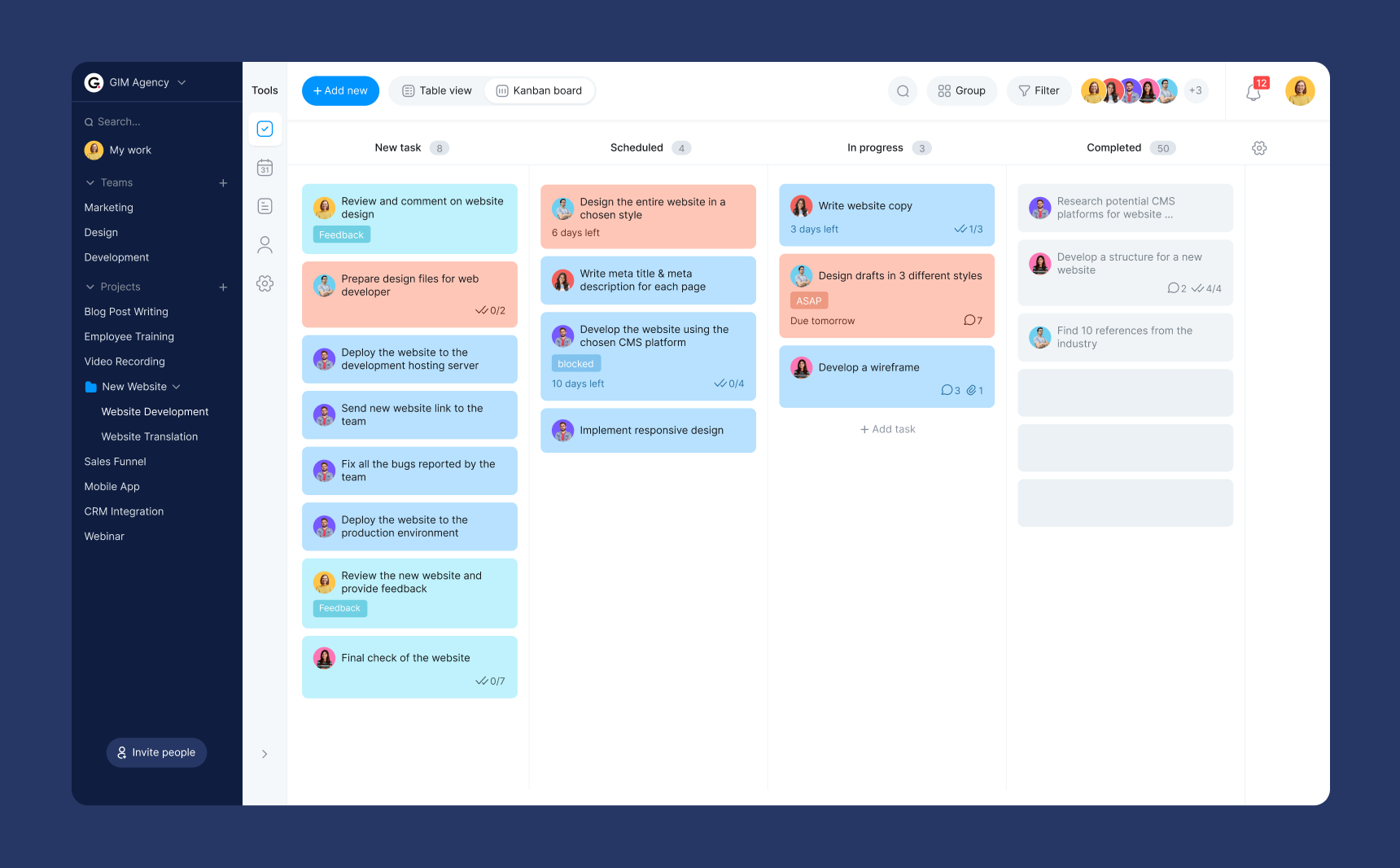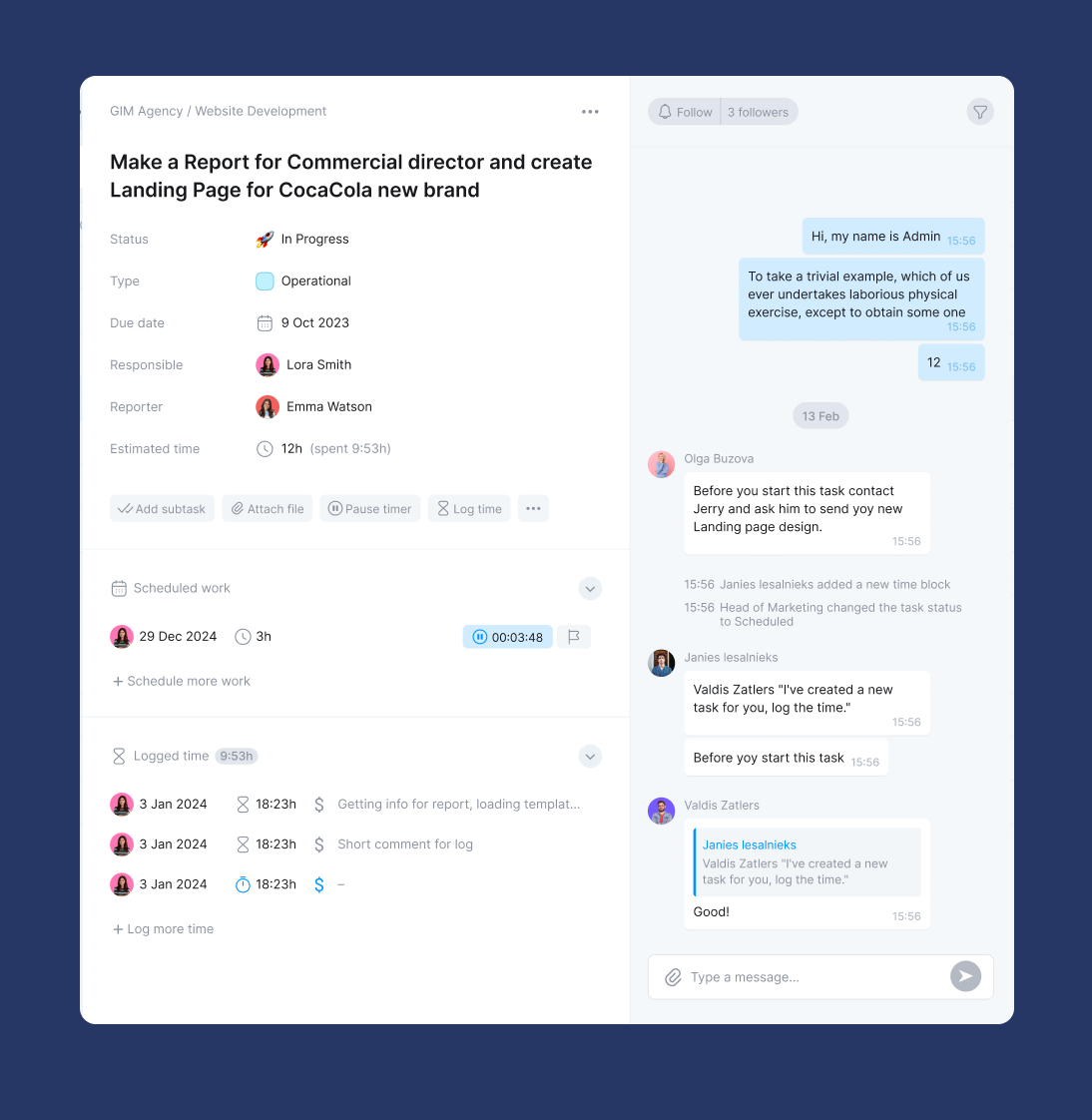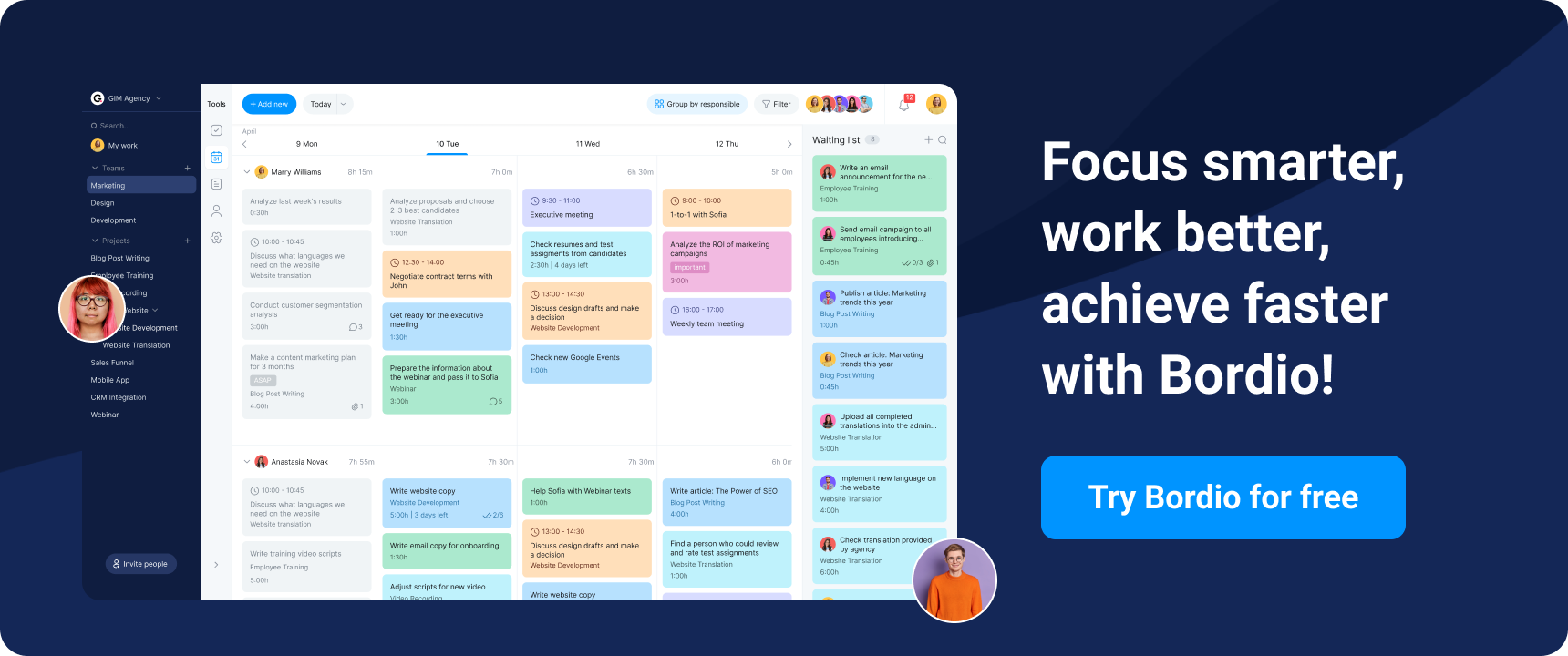Scrum is a framework that helps teams work efficiently on projects, especially in product development. It is based on Agile principles and allows teams to organize their work into short sprint cycles. Each sprint typically lasts one to four weeks and includes planning, executing tasks, and evaluating results.
But to make Scrum work effectively, assigning roles and holding meetings is not enough. Teams must embrace the values and principles guiding their work and collaboration. These values and principles form the foundation for a strong, adaptable, and cooperative team.
This article reviews the five core Scrum values every team should understand to maximize Scrum’s potential!
What are Scrum and Scrum teams?
Scrum is a framework for making choices based on real-world facts and observations. Teams review their progress regularly and change their work based on their learning. Scrum teams entail tight collaboration among team members and stakeholders to coordinate efforts and accomplish common goals without micromanagement.
Scrum teams are small, cross-functional groups that cooperate using the Scrum framework, an Agile technique for incrementally building products. These teams use self-organization, which means they manage their tasks with little external supervision. Each Scrum team consists of three core roles: developers, product owners, and scrum masters.
Tip: You can read about key roles of Scrum team in our latest article – “Creating Perfect Scrum Team Size.”
Every scrum event has a time constraint, which helps keep meetings focused and effective. This helps to keep pace and avoid distractions. Teams should periodically reflect on their performance to find strengths and opportunities for improvement. This drives for better results and increased quality.
Core scrum values
Each scrum team should adhere to five fundamental values: courage, focus, commitment, respect, and openness. These values impact how team members collaborate, make decisions, and achieve their objectives.
Courage: Taking bold steps for progress
Courage is the willingness to make tough decisions and tackle challenging tasks head-on in a Scrum team. As one of the five Scrum values, courage empowers team members to act even when facing obstacles. It’s the backbone of staying open to change, especially when acknowledging that something in the process isn’t working as expected and requires adaptation.
Courage in Scrum also means having the strength to uphold Scrum principles, even if it means challenging external demands like tight deadlines or stakeholder pressures. Often, Scrum team members must step back and rethink planned tasks to enhance the project’s overall success. This value allows them to speak up when issues arise and adjust their approach to stay aligned with Scrum principles.
When a Scrum team builds and supports a culture of courage, it creates an environment where each team member can be transparent and open. This openness leads to more vital collaboration, better problem-solving, and a shared commitment to adapt as needed—critical elements for team success.
Tip: Collaboration indeed is really important for effective business; that’s why we recommend to read our “Tips for Effective Teamwork” article!
Focus: Concentrating on what matters most
In a scrum team, focus means putting all your energy and attention into the work that brings the team closer to its primary goals. Every sprint in Scrum is planned around a clear sprint goal, which guides the team’s work. Scrum teams avoid distractions and stay efficient using tasks that directly contribute to this goal. Instead of multitasking or chasing new ideas, team members focus only on what’s needed to reach the sprint goal. This steady focus helps the team consistently deliver high-quality work and meet deadlines.
The Bordio project planner is a valuable tool for supporting this kind of focus. With Bordio’s team task board and waiting list, scrum teams can reduce scope creep by setting aside non-essential tasks for later. This keeps everyone aligned and working toward the same sprint goal, making meeting team objectives easier and supporting a solid project outcome.
Commitment: Dedication to goals and collaboration
In Scrum, commitment works on two levels. First, there’s personal commitment—each member commits to the team and its work. Second, there’s a commitment to the team’s goals, like the Sprint and the overall product goals. Trust grows within the team when team members are committed to completing their jobs and ensuring their efforts advance the project. Everyone understands that others will pull their weight, communicate when things are unplanned, and collaborate to address problems.
Tip: Explore more about sprints in project management!
Scrum team members create a culture of accountability by committing to their work and respecting each other’s contributions. This trust makes it easier for everyone to cooperate, plan better, and handle challenging situations consistently.
Respect: Building solid and trustworthy relationships
Respect is key for any team to succeed in Scrum. It means recognizing each member’s skills, experience, and ideas. Everyone in a Scrum team plays a part in reaching the Sprint and Product Goals, so respecting each other’s contributions is really important. When team members respect one another, they create an environment where everyone feels valued and safe to share their thoughts. This encourages open discussions, honest feedback, and smoother teamwork, which are all vital for managing complex projects.
Respect in a Scrum team goes beyond just the team members—it also includes clients, stakeholders, and everyone involved in the project. Respecting stakeholder input means listening to their needs and viewpoints and ensuring they feel heard. This way, when changes are needed, the team can consider adapting carefully while still focusing on the Sprint Goal.
Bordio is a team project planner who supports this respect and commitment by providing a clear, organized view of each team member’s work. This helps everyone stay on the same page and appreciate others’ contributions. With tools for sharing feedback and task management on the project planning board, Bordio lets Scrum teams work transparently and respectfully, making reaching project goals easier and satisfying clients.
Openness: Encouraging transparency and flexibility
Openness in Scrum includes sharing progress on tasks, discussing any challenges, and being upfront about any changes to the plan. When Scrum team members are open with each other, it creates a safe space for everyone to talk about the difficulties they face. This way, the team can find solutions and make adjustments when needed, essential for reaching their Sprint and Product Goals.
Openness also means being willing to embrace new ideas and be flexible in response to changes that might impact the project. Sometimes, unexpected issues arise, and having an open mindset helps the team pivot and adapt quickly. This flexibility allows Scrum teams to be more innovative and creative in finding solutions.
Teams that practice openness solve problems more efficiently and build stronger relationships. This trust within the team encourages a culture of collaboration, where members feel comfortable sharing ideas and working together to overcome challenges, leading to better project outcomes and a more successful Scrum experience.
Building a strong team culture with Scrum values
We want to integrate Scrum values into our team to build a strong team culture and an ideal workflow, but you’re probably wondering how to make it happen, right? If you’ve already tried to implement this into your workflow and are encountering problems with one or more of the currencies or Scrum values that can feel abstract, you might need transparent practices to guide the work process. And we have just that for you here!
Learning by doing
Learning by doing is based on the value of Courage. Scrum thrives on empirical process control, meaning that decisions are made based on what the team observes in real time rather than guessing what might happen next. In simple terms, we do something, then learn from the outcome and do it better next time. It’s courage not to be afraid of making mistakes and hard decisions. By continually inspecting and adapting their work, Scrum teams can remain agile and make informed choices. Team project trackers like Bordio support this by helping teams monitor time and performance, providing concrete insights into where improvements are needed.
Focusing on what brings the most value
Focus itself as a value is quite an explicit instruction. It is vital in any job and is a crucial part of teamwork in Scrum. In Scrum, you must focus on the tasks that bring the most value to the project.
To focus effectively, Scrum teams prioritize their work based on how each task contributes to the Sprint and Product Goals. By identifying tasks that provide the most outstanding value, teams ensure they complete the most critical work first. Many Scrum teams use a “day theming” method to dedicate specific days to different types of tasks. For added convenience in Bordio’s task management board, you can color-code tasks in Types for each theme and drag and drop tasks with needed colors onto specific days for easy planning.
When teams clearly understand their most valuable tasks, they can avoid getting sidetracked by less important work and keep a steady pace. How else can work management software like Bordio help teams choose the right focus points? Using the work task tracker, you can also create custom task Types based on prioritization methods like the Eisenhower Matrix or the ABCDE method. Assign tasks colors based on their priority level to stay on track visually. This clear view keeps everyone aligned and helps each team member understand what’s next. The task board also allows progress tracking, making it easy for the team to celebrate small wins and stay motivated.
Continuous improvement
We already talked about learning in progress with work as an essential part of Scrum. The same stands here with continuous improvement rooted in Commitment value. Scrum teams work in iterations, or Sprints, to continuously improve their product and process. At the end of each Sprint, at the sprint review and sprint retrospective, the team reflects on what worked well and what can be improved. This iterative development allows for quick adjustments and ongoing refinement, ensuring the team is always moving toward better efficiency and product quality.
Tip: All you need to know about sprint review vs retrospective.
This reflection is vital to the process, allowing the team to learn and grow continuously. The team can make quick adjustments by looking back at their performance and processes. For instance, if specific tasks took longer than expected, they can identify why that happened and plan better for the next Sprint. This ongoing refinement helps to enhance efficiency and product quality.
Time-boxing: Managing time effectively
Another practice is Time-boxing. All Scrum events, from sprint planning to daily standups, are time-boxed to ensure they run only as necessary. This approach ensures that meetings stay focused and productive and that the team can maintain a steady workflow without interruptions.
When meetings are time-boxed, they stay focused and don’t drag on. The quick format helps keep momentum high so everyone can jump back to work without losing time. This format connects to the Focus and Openness values by supporting clear communication and enabling brief, productive exchanges that keep everyone on track and informed.
Timeboxing is an excellent technique for managing tasks. Setting specific time blocks allows you to prioritize effectively and stay on top of your schedule. You can create focused time blocks for an entire task, a piece of a larger project, or a group of similar tasks to streamline productivity. Bordio’s time management tools make this super easy! When you create a task, you can add time blocks into your schedule, spreading them out to ensure you have enough time to complete everything. You can’t mark a task complete until all those time blocks are checked off.
Working together for optimal results
Collaboration is critical in any Scrum project and follows the values of Commitment, Respect, and Openness. It’s not just about the Scrum team; it includes stakeholders and the Product Owner. Everyone can achieve the Sprint and Product Goals more effectively when they align their efforts. Effective collaboration means every voice is heard, which brings different perspectives into play. This openness fosters creativity and helps the team understand all facets of the project. It also strengthens relationships and nurtures mutual respect, one of the core Scrum values.
The Product Owner plays a crucial role by managing the product backlog and ensuring the team focuses on tasks that deliver the most value. By collaborating closely, the Product Owner can help steer the project based on stakeholder feedback, which ultimately helps meet team and client expectations. With effective collaboration, everyone shares in the project’s success, allowing the team to adapt quickly when challenges arise.
Self-organization
Another practice rooted in Commitment values is self-organization. In Scrum, teams aren’t micromanaged; each member takes charge of their tasks and contributes to the Sprint Goal. This empowerment leads to greater ownership, boosting engagement and productivity. There are some tips for self-organization, which are especially useful if you’re working remotely:
-
Set Clear Goals: Write down short- and long-term goals and review them regularly.
Plan Your Day: Spend a few minutes each morning identifying and prioritizing your top tasks.
Use the Pomodoro Technique: Work for 25 minutes, then take a 5-minute break. After four cycles, take a longer break to stay focused and prevent burnout.
Minimize Distractions: Create a comfortable, distraction-free workspace.
Keep a To-Do List: Use a digital app or a daily task planner like Bordio to track and prioritize tasks.
Final thoughts on scrum values
In summary, integrating scrum values is essential for the success of any project management effort. When scrum team members respect each other’s contributions, it fosters a positive environment where everyone feels valued. This mutual respect is crucial in creating a cohesive scrum team that can effectively navigate the challenges of the scrum methodology. The scrum master facilitates this culture, ensuring that scrum team members communicate openly and collaborate seamlessly.
By adhering to these values, each scrum team member can enhance performance and achieve the project goals more efficiently. Ultimately, embracing and integrating scrum values strengthens the team dynamic and drives the overall success of project management, showcasing the power of scrum in action.
